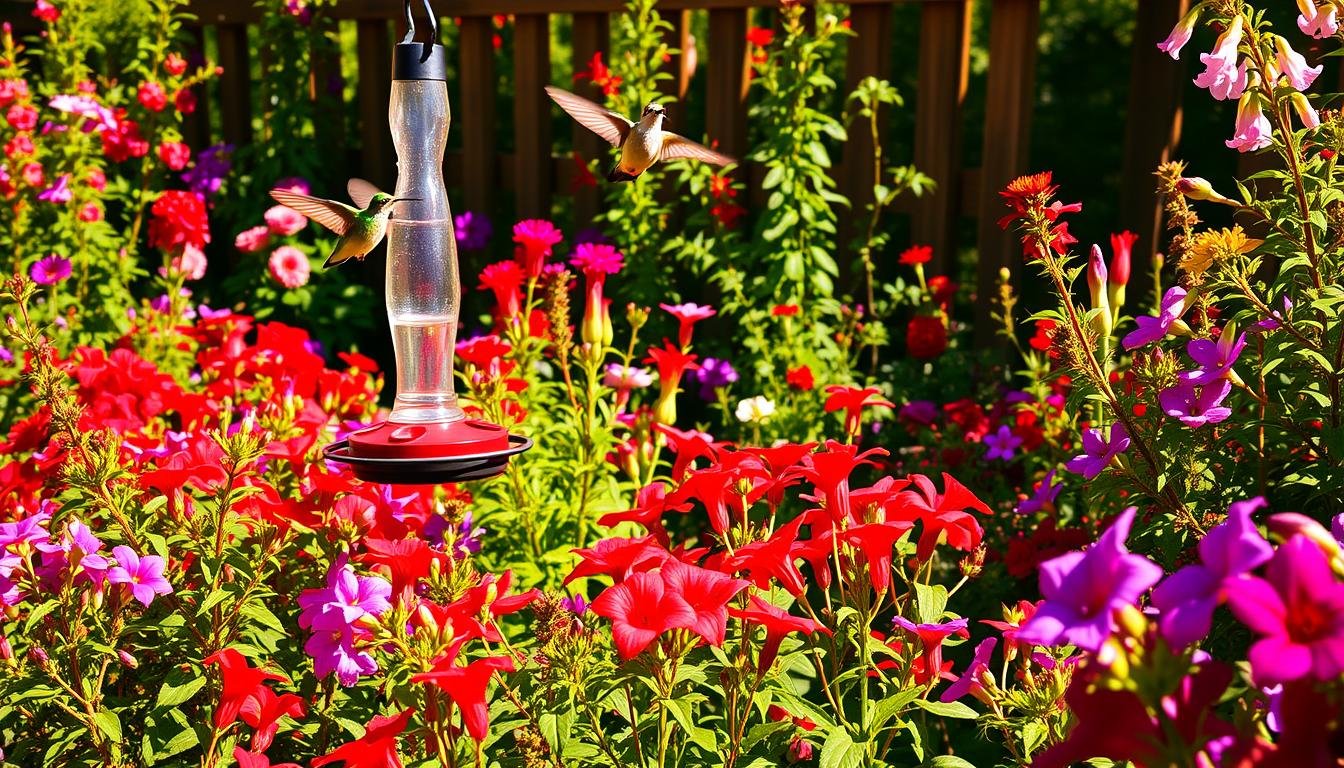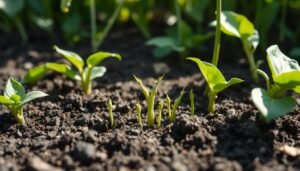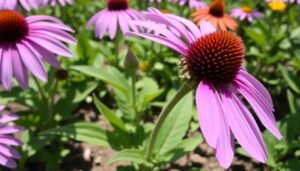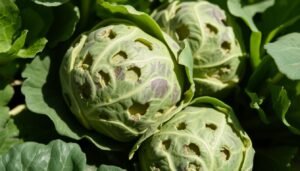As a gardener, I’ve always been amazed by hummingbirds. They’re not just pretty; they’re also great pollinators. A single hummingbird visits 1,000-2,000 flowers every day. This makes them very important for plants and nature.
To attract hummingbirds, you need more than just a feeder. You must create a special place for them. I’ve learned that using native plants, smart feeders, and good design is key.
First, you need to know what hummingbirds need. They need lots of nectar, clean water, and places to rest. By using plants that are good for them and keeping your garden clean, you’ll make a safe home for them. Here I have in detail discuss the easy ways on how to attract hummingbirds to your garden.
Key Notes;
- Hummingbirds pollinate up to 2,000 flowers daily, boosting garden productivity
- Native plants with tubular shapes work best for nectar access
- Clean feeders and pesticide-free zones are non-negotiable for bird health
- Multiple water sources increase visitation frequency
- Strategic plant grouping creates natural feeding corridors
- Shelter options protect from predators and harsh weather
Table of Contents
Why Hummingbirds Are Essential Garden Allies
I’ve always loved hummingbirds for their bright colors. But their real value is in their power to help our gardens. They pollinate, control pests, and watch over the environment. By creating a hummingbird-friendly habitat, you help your garden and the whole ecosystem.
The Pollination Power of Hummingbirds
Hummingbirds can fly close to flowers because of their special way of flying. They use their long bills and tongues to get nectar. This helps them move pollen better than bees, studies show.
They eat a lot of nectar every day. This means they visit flowers a lot. They are like nature’s own pollination machines.
Ecosystem Benefits Beyond Nectar Transfer
Hummingbirds also help control pests. They eat hundreds of insects every day, like aphids. Their migration patterns, like the Rufous Hummingbird’s long journey, connect ecosystems across the world.
By supporting hummingbirds, we help food chains. This helps from Mexico to Alaska.
Indicators of Garden Health
Audubon research shows hummingbirds come earlier in spring because of climate change. Their presence shows how healthy our gardens are.
- Low pesticide levels
- Diverse native plant life
- Balanced insect populations
When I see hummingbirds often, I know my garden is doing well. Their fast flight is not just fun. It shows our garden is healthy.
Selecting Native Nectar-Rich Flowers
Native plants are key to attracting hummingbirds. They turn gardens into hummingbird highways. Let’s find out how to pick the best flowers for your garden.
Understanding Regional Plant Preferences
Hummingbirds and plants go hand in hand. Your location is important. Audubon’s research shows Monarda (bee balm) is a hit in the East. In the West, Lonicera (honeysuckle) is the favorite.
Top Hummingbird-Attracting Plants by USDA Zone
| Zone | Spring Stars | Summer Showstoppers | Fall Fuel |
|---|---|---|---|
| 5-7 | Columbine | Scarlet Beebalm | Cardinal Flower |
| 8-10 | Coral Honeysuckle | Turk’s Cap | Firebush |
Bloom Sequence Planning for Continuous Food
- Start with early bloomers like red buckeye (March-April)
- Transition to summer phlox (June-August)
- Finish with late-blooming salvia (September frost)
Creating Color Contrast Strategies
Hummingbirds love red, but contrast helps them see better. Try pairing:
- Scarlet sage with purple coneflower
- Orange honeysuckle against blue lobelia
“Plant in clusters of 3-5 specimens – solitary flowers get overlooked”
Tube-Shaped vs. Open Bloom Structures
Trumpet creeper’s long tubes are perfect for curved bills. Bee balm’s open form is quick to access. Mix both:
- Tube specialists: Penstemon, fuchsia
- Open bloomers: Zinnia, milkweed
This mix helps young hummingbirds learn and adults refuel fast.
Setting Up Effective Hummingbird Feeders
Native flowers attract hummingbirds, but feeders are their high-energy stops. Success comes from three areas: feeder design, nectar quality, and placement. Let’s explore each to make a great dining spot.
Saucer vs. Bottle Feeders: Which Performs Better?
I’ve tried both and found their strengths:
- Saucer-style feeders: Easy to clean, leak-resistant, and perfect for shaded spots
- Bottle feeders: Great for sunny areas with ant moats, but need more cleaning
Choose feeders with bee guards and perchless designs. They keep out insects and let hummingbirds feed easily.
Crafting the Ultimate Nectar Formula
The Cornell Lab of Ornithology says 1:4 white sugar-to-water is best. Here’s how to make it:
- Boil water for 2 minutes to kill bacteria
- Mix until sugar dissolves
- Cool it down before filling feeders
Storage Secrets for Fresh Nectar
Nectar stays fresh for:
- Up to 2 weeks in the fridge
- 3-4 days at room temperature
“Never use red dye or honey in nectar solutions – plain sugar water is perfect.”
Feeder Positioning Masterclass
Place feeders for safety and visibility:
- Hang 4-5 feet high near cover
- Put multiple feeders 10-15 feet apart
- Keep them in partial shade to slow nectar spoilage
I move feeder spots weekly to welcome more hummingbirds.
Incorporating Water Features They Can’t Resist
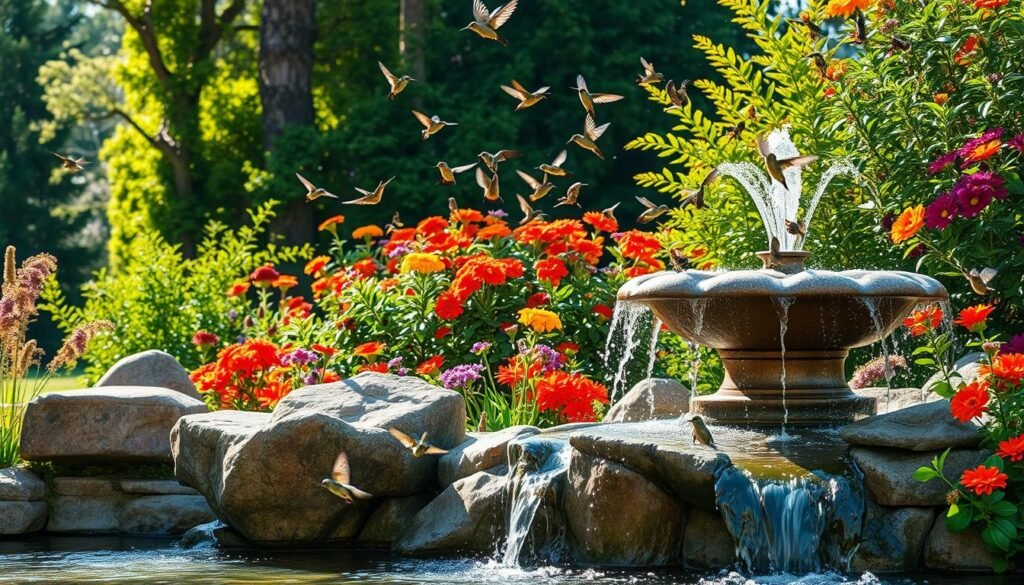
Nectar-rich flowers and feeders attract hummingbirds. But water sources are key. They bathe daily and like shallow, moving water.
Misting Systems vs. Shallow Bird Baths
Misting systems mimic rain showers. They’re 3x better at attracting birds than static water. But, they need nozzle cleaning and use more water.
Shallow baths need textured surfaces. Add stones or rough tiles for grip. Keep water under 0.5 inches to avoid safety risks.
Creating Moving Water Effects
Hummingbirds see and hear water movement. Try these upgrades:
- Install a dripper above your bird bath
- Use a small solar fountain pump ($15–$25 online)
- Position baths near wind chimes to create ripple patterns
My DIY solar fountain uses a terracotta pot and a 5-watt pump. It circulates water quietly and offers perching spots.
Safe Cleaning Routines for Water Stations
Biofilm forms quickly. Clean plastic baths daily with white vinegar. Ceramic ones need weekly scrubs.
- Empty old water completely
- Scrub with a stiff brush (no soap)
- Rinse with boiling water to kill pathogens
Rotate multiple water stations for constant access. This prevents disease and keeps water spots inviting.
Providing Shelter Through Strategic Planting
Beyond feeders and flowers, safe havens are key for hummingbirds. They protect these tiny birds from predators, harsh weather, and exhaustion. Let’s explore how to design protective landscapes that meet their specific needs.
Best Protective Shrubs by Region
Native shrubs offer ideal cover while supporting local ecosystems. I’ve found these species work best across U.S. regions:
| Region | Shrub | Key Feature |
|---|---|---|
| Northeast | Red Chokeberry | Dense branching |
| Southwest | Desert Willow | Drought-resistant |
| Pacific Northwest | Red-Flowering Currant | Nectar-rich blooms |
| Southeast | Coral Honeysuckle | Evergreen foliage |
Creating Layered Canopy Coverage
A three-tiered planting strategy mimics natural habitats. Start with tall trees like Eastern Redbud for overhead protection. Add mid-level shrubs such as Buttonbush for nesting sites. Finish with low-growing plants like Bee Balm that allow easy access to ground-level insects.
Night Roosting Site Essentials
Hummingbirds need sheltered perches for nighttime energy conservation. Conifers like Eastern Hemlock provide windbreaks and insulation. Position roost sites:
- Within 15 feet of feeders
- Facing southeast for morning sun
- Away from artificial lights
By combining regional shrubs, layered canopies, and protected roosts, you’re creating a hummingbird-friendly habitat. This addresses their full lifecycle needs. Monitor which plants attract the most overnight guests – it’s nature’s approval rating!
Eliminating Pesticides and Chemical Threats
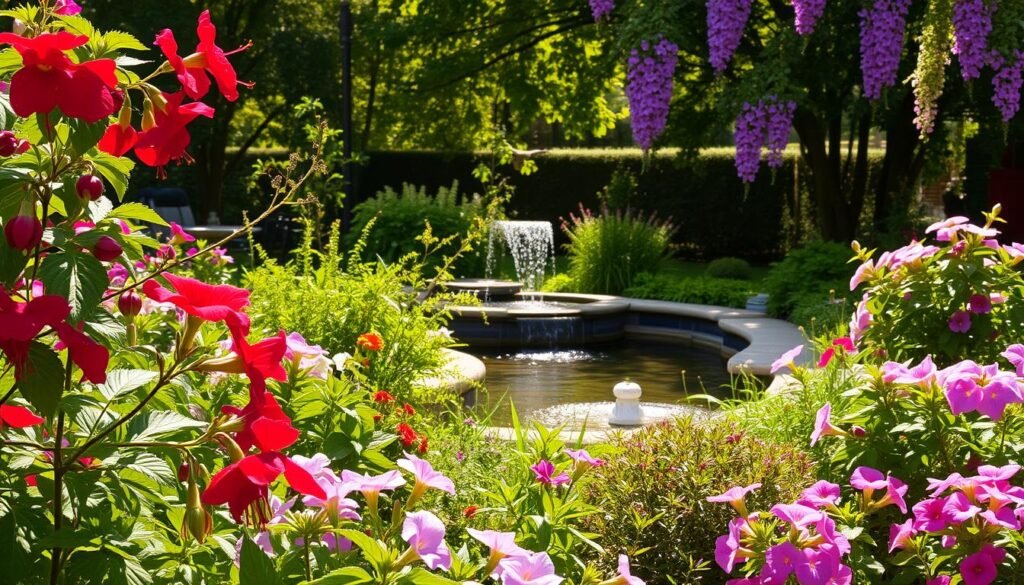
Your garden might be scaring away hummingbirds with chemicals. These tiny birds are very sensitive to toxins. To help them, we must change how we fight pests and care for the soil.
Organic Pest Control That Actually Works
I’ve found natural ways to fight pests instead of chemicals:
- Companion planting: Marigolds keep aphids away from nectar-rich salvias
- Neem oil sprays: Stops pests without harming hummingbirds
- Insect hotels: Attract insects that eat pests
| Chemical Pest Control | Organic Alternative | Hummingbird Benefit |
|---|---|---|
| Imidacloprid | Diatomaceous earth | Preserves insect protein sources |
| Glyphosate | Vinegar weed killer | Protects nesting materials |
Fertilizer Ingredients That Spell Trouble
Many natural fertilizers have hidden dangers. Always check labels for these:
- Neonicotinoids (listed as acetamiprid or thiamethoxam)
- Slow-release synthetic nitrogen compounds
- Antimicrobial additives
The Buffer Zone Calculation
When neighbors use chemicals, create a safe area. Use this formula:
Buffer distance (feet) = (Application zone width) × 1.5
For example, a 10-foot treated area needs a 15-foot buffer. This lets hummingbirds forage safely while toxins fade away.
Seasonal Strategies for Year-Round Visits
To keep hummingbirds visiting your garden all year, you need to match their natural cycles. I’ve learned to align my garden care with hummingbird migration patterns. This way, they always find what they need, whether they’re getting ready to fly or raising their babies.
Spring Migration Preparation Checklist
Spring is key for welcoming hummingbirds heading north. I start by setting up feeders 1-2 weeks before they arrive. I use Cornell Lab’s migration maps and eBird alerts to plan. Here’s what I do:
- Mix fresh 1:4 sugar-water solution (no dyes)
- Install feeders at varying heights for territorial species
- Place bright red ribbon near stations as visual markers
Summer Nesting Support Techniques
In the summer, hummingbirds focus on raising their young. I help by creating nesting material stations with:
| Material Type | Benefits | Placement Tips |
|---|---|---|
| Spider webs | Elastic nest foundation | Leave garden corners undisturbed |
| Cotton fibers | Insulating lining | Use mesh bags hung from branches |
| Moss fragments | Camouflage exterior | Scatter near water features |
Fall Fueling Stations for Migration
In the fall, I increase nectar calories with a 1:3 sugar-water ratio. This mix gives them the energy they need for their long flights. My fall plan includes:
- Keeping feeders active until 2 weeks after last sighting
- Adding late-blooming salvias for natural nectar
- Using ant moats to protect concentrated syrup
By following hummingbird migration patterns and adjusting my garden care, I’ve made my garden a reliable stop for them all year.
Maintaining Clean and Safe Feeding Stations
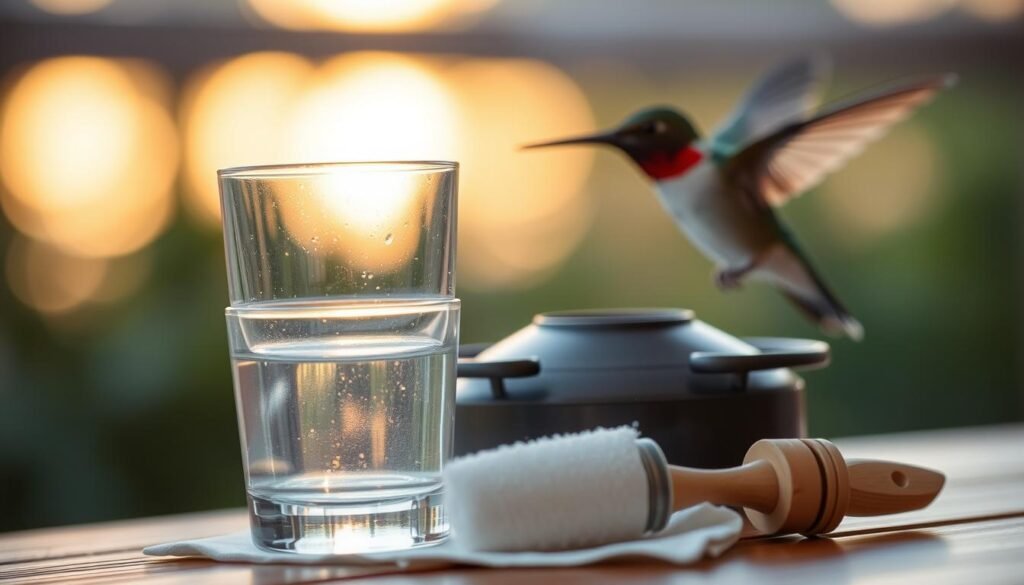
Keeping hummingbird feeders clean is not just about looks. It’s a matter of life and death for these birds. I’ve found three key practices to keep feeders safe and attract more hummingbirds.
Daily vs Weekly Cleaning Protocols
Temperature decides how often to clean. When it’s over 90°F, I clean feeders every day. I use a 1:4 vinegar-water mix to stop harmful fermentation. In cooler areas (below 70°F), I clean once a week. But always check for sticky spots.
| Temperature Range | Cleaning Frequency | Tool Kit |
|---|---|---|
| >90°F | Daily | Bottle brush + white vinegar |
| 70-90°F | Every 3 days | Pipe cleaners + baking soda |
| Weekly | Microfiber cloth + lemon juice |
Mold Prevention in Humid Climates
My fight against black mold found an unexpected ally: uncooked rice. Mix ¼ cup rice with warm water in empty feeders. Shake well—the rice cleans better than brushes. For tough mold, soak feeders in 1:10 bleach solution, then rinse three times.
Winter Feeder Management in Cold Zones
In cold weather, special steps are needed. I mix nectar with 5% glycerin to stop freezing. This keeps feeders working down to 15°F. Placing feeders on south-facing walls helps them stay unfrozen longer.
| Temperature | Nectar Recipe | Feeder Type |
|---|---|---|
| 32-45°F | 1:4 sugar-water | Insulated saucer |
| 15-32°F | 1:3 + glycerin | Heated basin |
| Remove feeders | Natural sources only |
These tips have made my feeders safe and welcoming for hummingbirds. Regular care becomes easy once you find the right routine for your area.
How to Attract Hummingbirds to Your Garden: Troubleshooting
Even the most inviting gardens can face challenges when attracting hummingbirds. Whether it’s feisty competition at feeders or unwanted insect visitors, these issues are solvable with simple tweaks. Let’s tackle common problems and turn your space into a hummingbird haven.
Solving Feeder Competition Issues
Hummingbirds are naturally territorial, but overcrowding can stress them. Here’s how to reduce squabbles:
- Cluster feeders in groups of 3–4 to mimic natural flower patches
- Space stations 15 feet apart (based on feeder competition studies)
- Use multiple feeding zones at different heights
Deterring Bees While Keeping Hummers
Bees love sugar water but can overwhelm feeders. Try these tips for hummingbird gardening:
- Choose saucer-style feeders with bee-resistant ports
- Install red-colored bee guards (bees see red as black)
- Place overripe fruit 10 feet away to divert insects
Addressing Territorial Behavior Patterns
Dominant hummers may guard feeders aggressively. Break their monopoly with:
- Timed feeding schedules (refill at dawn/dusk)
- Add hanging baskets as decoy feeding spots
- Use feeder covers during peak aggression hours
Remember, patience is key. It takes about 2–3 weeks for hummingbirds to adapt to new setups. Track patterns and adjust your tips for hummingbird gardening strategy as needed. Soon, you’ll see more relaxed visitors sipping happily!
Conclusion: Your Invitation to Winged Wonders
Creating a hummingbird-friendly space is more than fun. It helps connect habitats, as shown by Audubon’s research. By using native plants and clean feeders, you help these birds.
Start with three easy steps. Plant a native flower, clean feeders weekly, and check for chemicals. Your help makes a big difference. Report sightings to Cornell’s eBird to help scientists.
Learning to attract hummingbirds is a journey. Watch for fights at feeders and make water features right. Celebrate each hummingbird as a sign your garden is working. Share photos to inspire others and help fix broken habitats.

